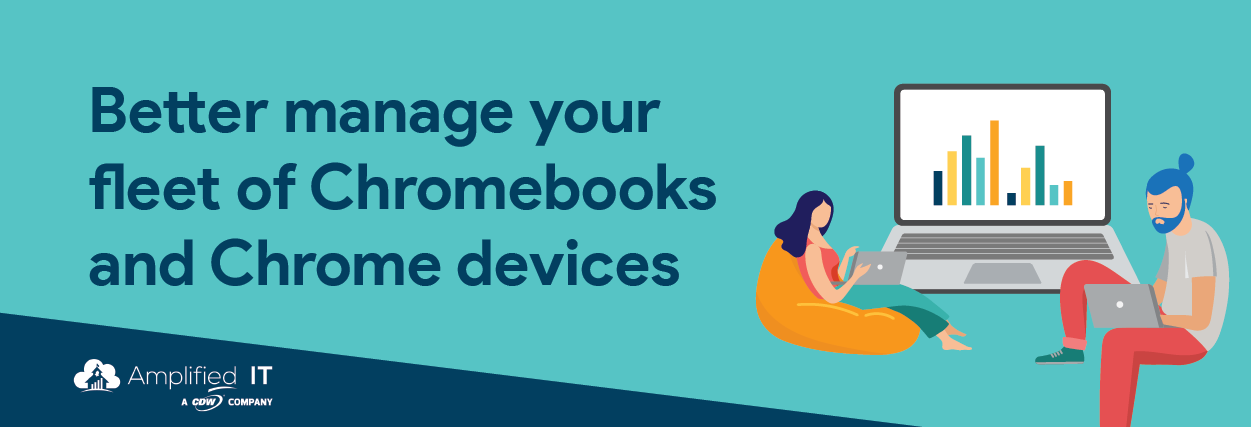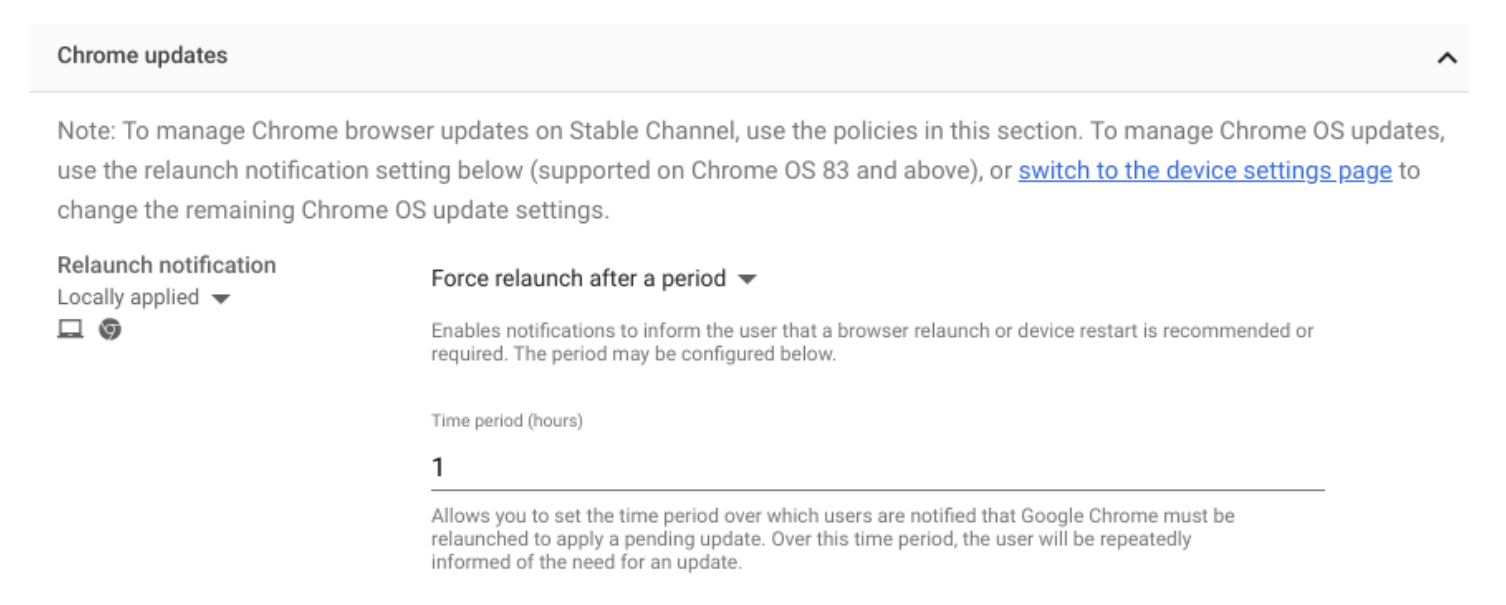One of the most robust and yet least understood areas of the Google Admin console are the Chrome settings. When we conduct Audits for K-12 schools, we often see settings that are ignored or misunderstood. The number of Chrome settings seems to be growing all the time, so let’s take a moment to talk about some of the key features.
First on our list is the continuous challenge that IT departments have with Chrome OS updates. Keeping Chromebooks up to date has required tech directors to implement “update Fridays” and string together Chrome settings to get Chromebooks to update, but even that didn’t always guarantee 100% of updates. Fortunately, there is now a setting that can get you closer to that goal. The Relaunch notification setting allows you to force a relaunch when an update has been downloaded. Relaunching a Chromebook after an update is downloaded is a crucial step in the update process and also something schools could not control in the past. If an update is downloaded but the device is never restarted then the update doesn’t go into effect. This is what caused so many headaches for Admins over the years, but not anymore.
The best thing that has happened to the Admin console in a while was a quietly released setting. However, in order to capitalize on this setting, you need to configure a few of them first. You have two options to set. One is to notify users to update their devices, which is great as a gentle reminder. The other is a more direct and controlled approach which is the Force relaunch option. This setting is a little confusing on how it approaches a forced update so let’s clarify the process. The time that you set is the amount of time that you are allowing the user to restart their device before the system takes in and takes action. This does not mean that if you set it to three hours that at the end of the three-hour period it will automatically restart. The actual forced restart time is around 2:00 – 4:00 AM when we tested this setting with our own Chromebooks. This is great because that means it won’t be a distraction or an inconvenience when the updates occur.
Learn how to better manage your fleet of Chromebooks and Chrome devices with training from the NEW Amplified Admin Chrome Specialist Certification course.
Next up is a setting that you configure to stop unwanted printer types from being accessed by your users. There are printers called Zeroconf-based printers which broadcast themselves on local networks. Therefore users are able to see and add these printers without having them assigned to them. This is a problem for some schools as students figure out how to manually add these printers and print to them unrestricted. If we want to restrict these printer types simply click the box to block this printer type. You could also lock down other printer types to restrict printing altogether and allow for the saving of files on local drives only. The options are all under the Blocked printer types setting.
The last setting to discuss is Download location. Like printing, download location allows you to control where users are able to save their downloaded files. You can force users to use Google Drive or prompt users to decide where they should save downloaded files. This is important so that users that may not use the same device every day can get back to their files if they are saved to Google Drive. So if you set it to Force Google Drive you will ensure that users always save their files to a place that is easy enough to get back to.
We can’t describe every Chrome setting in this article, but if you or someone on your team would like to learn about more of the vital Chrome settings we have the course for you. Our Amplified Admin Chrome Specialist course (with prerequisites of Amplified Admin Level 1 and 2) dives deeper into the Chrome settings for users and devices. It’s a great way to level up your knowledge with your team and become an expert on Chrome setting configurations and device management.
-

Tom Woods
Google for Education Training Lead -
About the Author:
Tom Woods is a Google Cloud Certified Administrator, Certified Deployment Specialist, and Amplified Admin with over 24 years in IT and 17 years in K-12 education. Tom brings unique insights into the planning, implementation, and support of Google for Education in the K-12 space. His experience includes 14 years in a large Ontario K-12 district where Google Workspace and Google for Education was introduced in 2009 and has since grown into one of the largest installations in the province by Tom and his team. Joining Amplified IT 4 years ago, he now assists schools across North America and leads our Consultancy team of experts.





